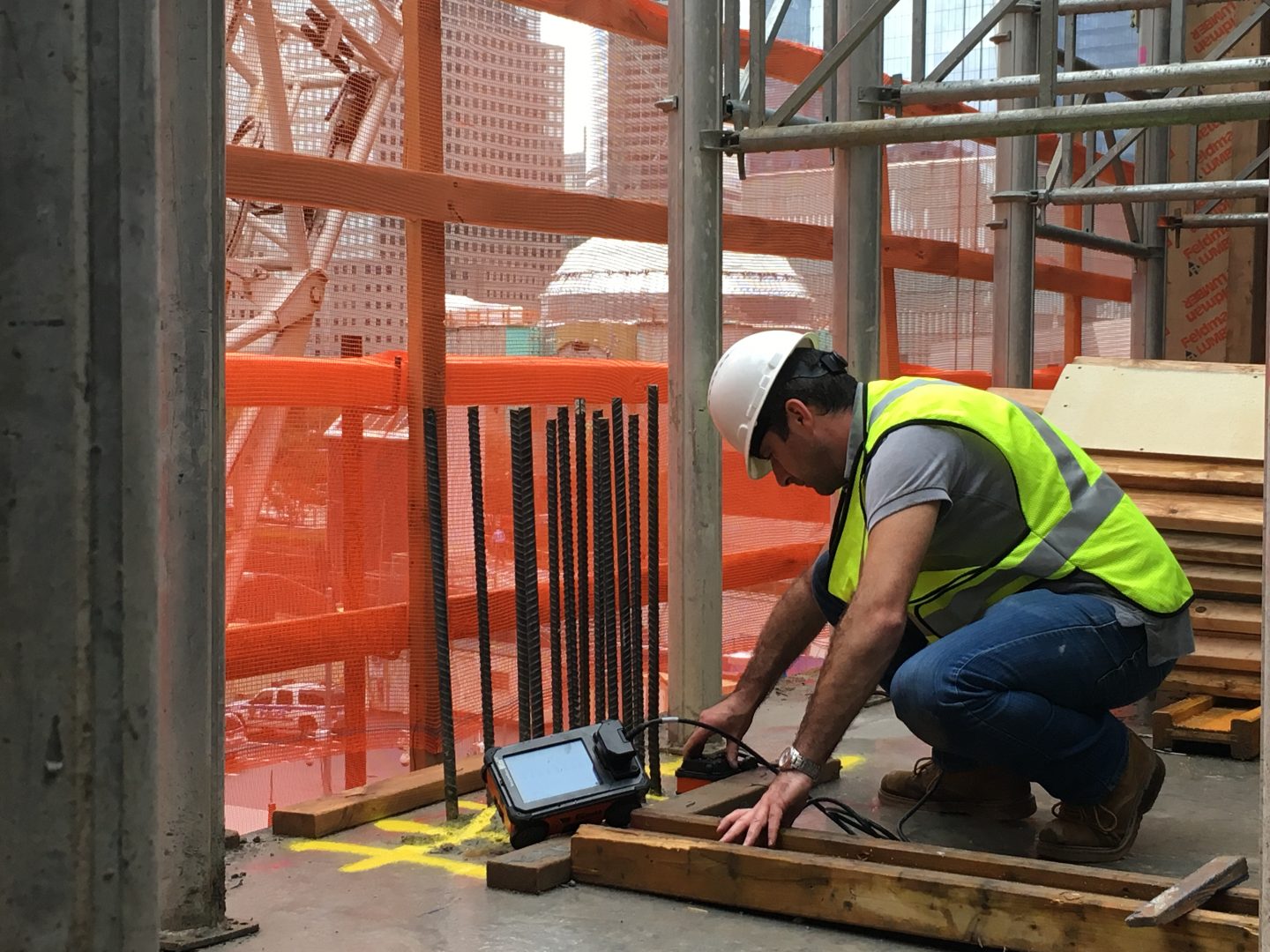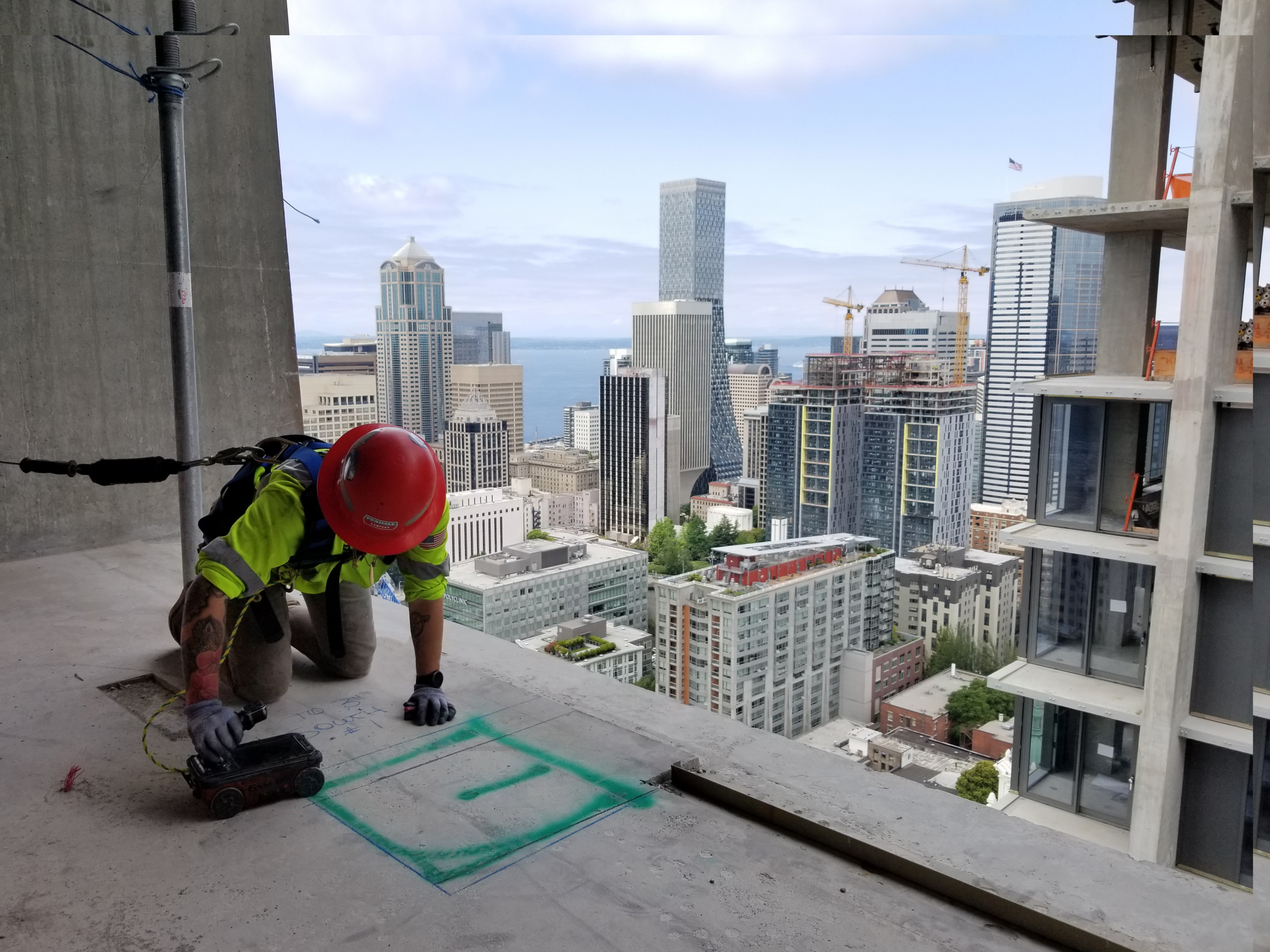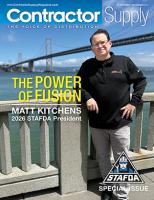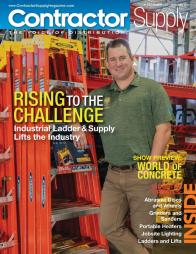Applications: Using Ground Penetrating Radar to Increase Construction Efficiency
On-site equipment can keep workflow going smoothly.
As the saying goes, “Time is money,” and general contractors, superintendents and project managers know that the cliché means focusing on keeping workflow going as smoothly as possible. Like a conductor of a symphony, GCs make sure each trade “chimes in” when needed – not before and not after.
Especially in the construction world, the GC’s role is to keep the “instruments” (mechanical, electrical, and plumbing contractors, concrete, framers, fire and sprinkler, drywallers, and steel contractors) working together in harmony. Giving construction crews ground penetrating radar (GPR) systems helps enhance the safety and efficiency of the jobsite.
Many factors can reduce construction efficiency
Construction efficiency can be affected by a variety of factors. There can be breakdowns in timing due to shipment delays. Did a plumbing sleeve get knocked out of place during the pour? Did steel pieces needed to weld framing together get covered by concrete? Is there a change order that requires a conduit or pipe run to be moved 10 inches – on all 30 floors? While these issues are being sorted out, there is often a domino effect with multiple contractors – even one or two minor issues can result in a cascading delay for the tradespeople on site.
 Data sharing on the construction site
Data sharing on the construction site
While construction cultures do tend to vary by region, it is not uncommon to see superintendents, assistants, project managers, and engineers walking around with ToughPad tablets connected wirelessly, giving them real time access to individual plans, schedules, and drawings.
Imagine standing on the 30th floor of a high rise and being able to pull as-builts on a screen rather than having to walk all the way to a construction office that may or may not even be within the building.
Different manufacturers are bringing in tools to digitize space and drawings. For example, if the fire sprinkler pipes are mistakenly placed in the same location as plumbing lines, those with tablets could shoot the conflict to CAD engineers and get it resolved much more easily. Being able to upload the GPR data to the company’s server and share it with engineers who have to make a decision on whether it is clear so they can drill is a real time and money saver. Without this information, they would have to go to the office, print out the data and drive it somewhere – adding steps and time and costing more money.
On the horizon is an increase in cloud-based sharing of information along all levels of the construction process, from data collection to the decision makers (engineers, project managers) and back down to the trades doing the work (electricians, plumbers, mechanicals). This even extends to GIS-based data making its way to excavators clearing ground for the beginning of a project.
GPR tools can improve safety
GPR is almost always needed when something unexpected occurs. It is rarely something planned out in the construction cycle. So how can contractors keep unplanned events from adversely affecting the construction schedule? One way is to give GCs access to GPR equipment on each jobsite. Many trades and GCs are bringing in units to keep on hand, so a simple problem can be fixed quickly.
 Newer equipment features user friendly interfaces, easy enough that someone who does not “do GPR for a living” can take the tool out and use it for clearing an area, double checking to see if possibly a sleeve has been forgotten – or to make sure concrete drillers are not going to hit anything.
Newer equipment features user friendly interfaces, easy enough that someone who does not “do GPR for a living” can take the tool out and use it for clearing an area, double checking to see if possibly a sleeve has been forgotten – or to make sure concrete drillers are not going to hit anything.
This can be done relatively easily, with manufacturer’s training and a bit of experience. (It should be noted that GPR service providers will always have a place; some areas are just so complicated that having years of experience with thousands of scans under their belt is necessary.)
Take a recent example of a tower crane being used for support during construction of a high rise building in Austin, Texas. The crane anchors affixed to different floors started breaking, presenting a significant safety issue as there was a public street below and the new construction was surrounded by occupied buildings. The job came to a screeching halt when it was discovered; GPR was used to verify damage and indicate areas for new anchors, and the job could quickly start up again without further delay.
Another example was a utility company that was conducting horizontal boring for installation of a fiber optic cable. A horizontal boring company used 811 to mark out utilities based on use of as-builts. Unfortunately, an unmarked water line was cut while laying the fiber optic cable. The contractor had two out of town crews standing by (on per diem), waiting for the water line to be located for the entire apartment complex. This is a case where on-site GPR could have verified the utility markings simply and quickly before the issue arose.
I have personally experienced multiple instances of change orders occurring that moved locations of various piping or conduits, resulting in delays for multiple trades. Any time something unexpected was found during a saw cut – say a conduit was struck – you have not only the saw crew on hold, billing your company stand-by time, but also the trades waiting on the work. Could there be anything worse than hourly employees standing around due to these issues?
The best scenario would be if the GC could use on-site GPR equipment to do basic clearing immediately and get back to work. Instead, the contractor often has to call in a service provider and schedule the work. Then the provider has to scan all the possibly affected areas before getting back to work.
This method of locating is very frequently an issue in remodeling jobs. GPR may be built into the planning process, but usually a crew will start saw cutting – and when they hit a conduit that crew goes on standby, charging standby rates until GPR can be brought in to verify where it is safe to cut. I saw this happen once at an old strip mall where they were moving the bathroom and needed to sawcut trenches to run plumbing.
 Clearly, keeping GPR equipment on site would be a benefit to ensure the tight construction schedules are kept.
Clearly, keeping GPR equipment on site would be a benefit to ensure the tight construction schedules are kept.
Examples include GSSI’s StructureScan™ Mini XT and LT, rugged all-in-one concrete scanning systems designed for contractors who need to locate rebar, conduits, post-tension cables, and voids.
Another option is the GSSI UtilityScan® GPR system, with a simple user interface that makes it easy to locate and mark the depth of underground utilities in real-time in the field. The on-screen 3D data collection mode allows users to easily define the time slice depth and thickness in the field with the 3D data on the screen. The optional LineTrac® power detection module enables contractors to identify and trace the precise location of underground electric and RF-induced utilities.
Future of GPR tools focuses on improving data flow
Construction personnel can save time and money now by maintaining simple GPR tools on-site. All eyes are looking towards how quickly one can eliminate or reduce the dead time between collection of data and sharing it – so we can get the trades back to their work. CS
By Brett Caldwell, Application Specialist, GSSI, Inc. Learn more at www.geophysical.com
















